Brief

Резюме
- In Europe, only one in four joint annual plans manage to create value for both consumer goods companies and their retail customers.
- Retailers have a relatively low perception of their European consumer goods suppliers, and that has been declining over the past five years.
- Many of the levers that consumer goods companies use to grow the joint profit pool are close to the saturation point. For example, 59% of all promotions deliver no incremental value, but just subsidize baseline sales.
- Yet, the best performing consumer goods companies deliver more than 10% of incremental profit pool growth in a given year for all parties by doing five things differently.
In Europe, modern trade retailers account for 40% to 80% of annual sales and gross profit for most consumer packaged goods companies (CPGs), with much of that concentrated in four to five main customers in each country. A good year with one of these key customers typically translates into a good year for the consumer goods company. Unfortunately, many are having more bad years than good with their retail customers. Despite a substantial increase in trade investment, annual negotiations are getting tougher and more complex to manage. It has become more common for many consumer goods companies to end up in conflict with one of their critical retail customers in any given year.
Two main root causes are elevating the negotiation temperature—and tempers.
Written in collaboration with
Written in collaboration with
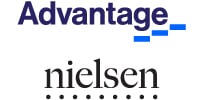
First, rapid shifts in the retail landscape have severely affected the traditional retailer business model (see the Bain Brief “How to Thrive in Europe’s Vexing Grocery Business”). The explosive growth in online sales, recently accelerated because of Covid lockdowns, is moving volume from profitable stores into less profitable e-commerce sales. Excess capacity in sales surface, which in some European countries continues to grow, is reducing average store traffic. The shopper exodus from hypermarkets to smaller, more convenient urban formats is hurting retailers with larger store networks. Yes, there have been some retail winners, but many traditional banners are suffering. Even if grocery retailers are enjoying a sales boost from the Covid-related at-home occasions, their profitability is likely to erode in the next five years, according to Bain research.
Second, many of the conventional levers used by consumer goods companies to create value in their categories are showing worrying signs of fatigue. A few years ago, a company only needed to come up with a good innovation, an exciting promotion campaign or the right change in mix to create incremental value for itself and its customers. It’s no longer that simple. According to Nielsen research, 59% of all promotions fail to deliver incremental value—they only subsidize baseline sales (see Figure 1). As a result, around €27 billion ($32.5 billion) are wasted in “bad promotions” each year across Europe’s top 12 markets. Equally alarming, 50% to 70% of the entire available assortment present in the market delivers only 2% of total category sales. Yet, an average of 120 new items are launched every day in the top five European markets. Of those items, only 30% manage to get sufficient distribution and rotation to eventually survive. With the average store getting smaller, it will become increasingly hard for many SKUs to justify getting space in the store.
Nearly 60% of all promotions fail to deliver incremental value

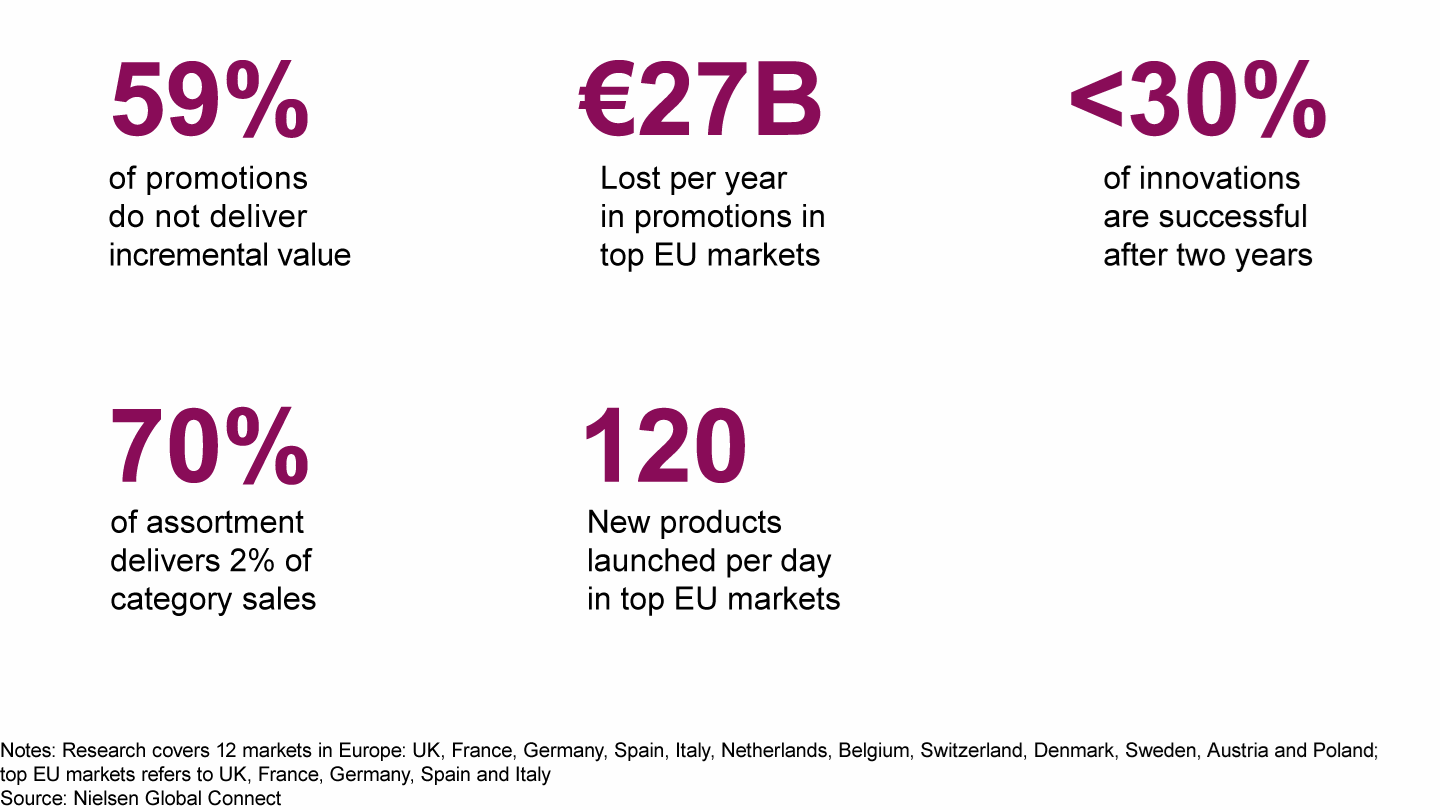
The situation is taking a toll on retailers’ perception of their consumer goods company suppliers. The net favorable opinion of retailers toward consumer goods companies in Western Europe declined by one point in the past four years, from an already noticeably low base (23 points on a scale of –100 to 100), according to Advantage. That’s 26% lower than the average retailer perception of consumer goods companies globally, which rose by four points over the same time period.
Most consumer goods companies make being more “customer centric” one of their critical commercial objectives. They also acknowledge that they cannot be in a permanent negotiations fight with all of their customers, even if at times they feel the need to take a more assertive stand. Most would also agree that the only sustainable solution is to win with their customers; growing the joint profit pool with their retail partners—not just their own profits. Unfortunately, creating value for both parties requires more than just awareness and willingness. According to Bain research, only 27% of joint annual plans in the past five years actually grew profits for both consumer goods companies and their retailers (see Figure 2). In fact, nearly 25% of joint annual plans actually resulted in lower margins for both. In the rest of the situations, margin gains merely moved from one to the other, more often to the benefit of the retailer.
Only 27% of joint annual plans actually grew the profit for both consumer goods companies and retailers in the past five years

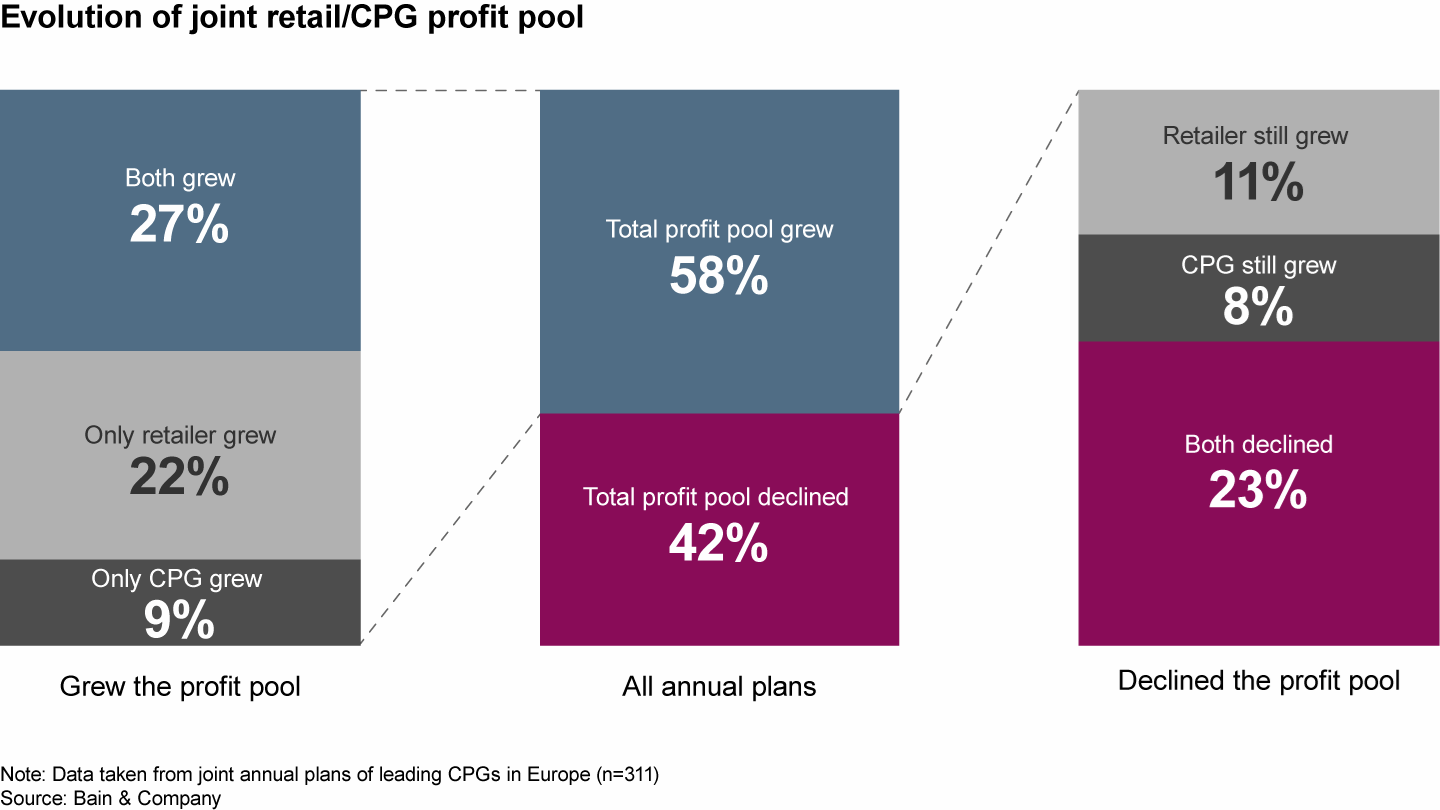
So, how do one in four consumer goods companies in Europe succeed in growing the joint profit pool for all parties? Here are the five things they do differently.
Understand their retailer customer economics and strategy, as well as their own. For us, this is the ultimate measure of true customer centricity. Few companies actually go through the effort of trying to build and understand their customer’s profit and loss (P&L) statement. Consequently, many initiatives in customer plans often create value for the consumer goods company, but fail to deliver net value for their customers, too. Even when they do help retailers, the consumer goods companies are unable to articulate how the initiative creates value, making it difficult for retailers to buy in. Knowing a customer’s P&L in detail (or at least understanding the basics of its main components) helps identify the big pockets of value creation potential. It also triggers new creative ideas on how to improve them.
It is also good practice to listen to the other side’s needs. As intuitive as it may sound, consumer goods players often fall into the trap of assessing performance against their own key performance indicators (KPIs) and fail to sufficiently understand their customer’s KPIs. That might explain why overall net favorable scores of consumer goods companies are typically so low (see Figure 3). The recent mobilization in response to Covid-19 is a good example of how to improve the dialogue. Surveyed retailers by Advantage acknowledge recent consumer goods company efforts to help address Covid-19 challenges, significantly improving their average scores in areas such as “integrated e-commerce” or “social responsibility.” In this respect, the Covid response might offer a glimpse as to what great partnerships could achieve.
Net favorable scores of consumer goods companies are typically low

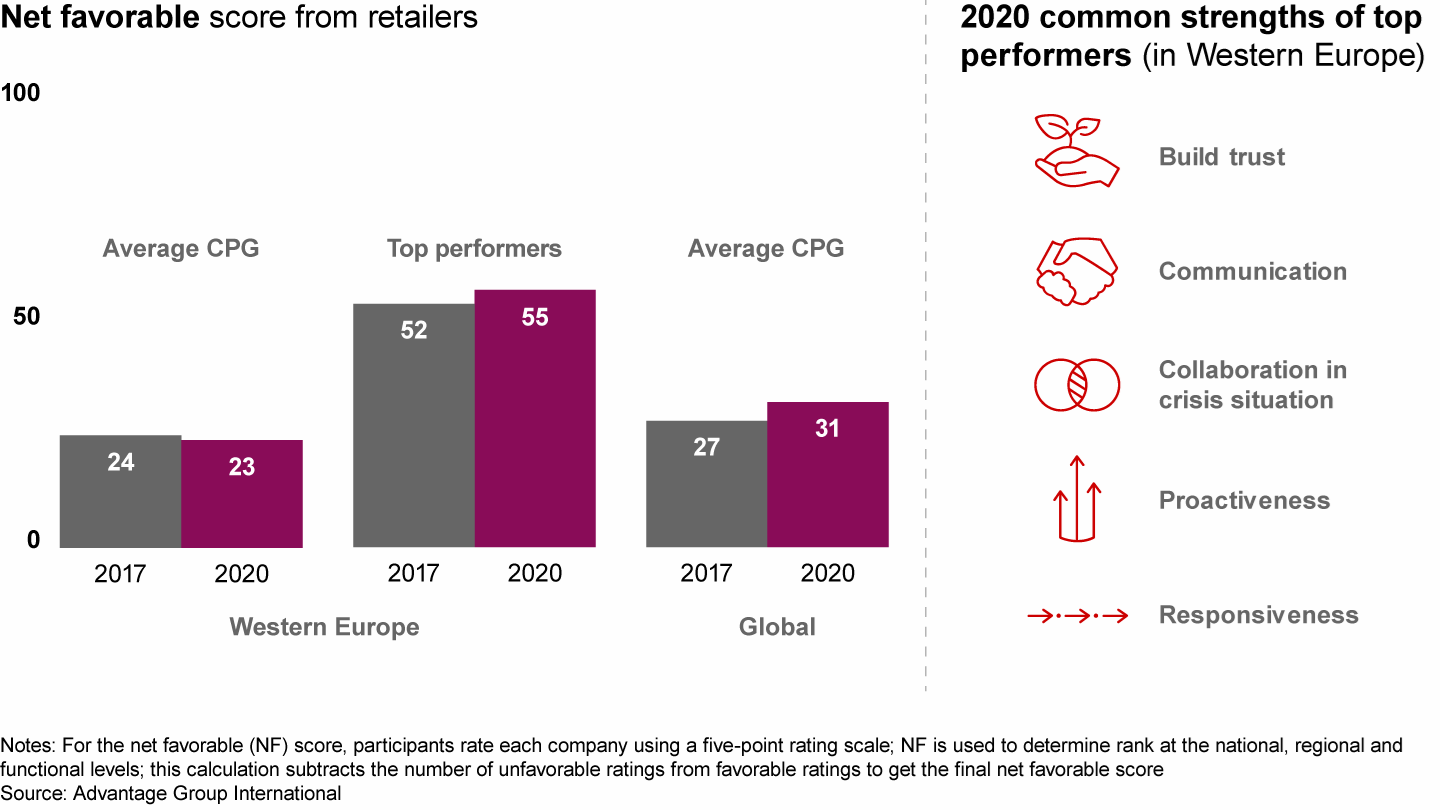
Expand the value creation horizon to 360-degree levers. As we mentioned, promotions, innovations and some of the other traditional levers that consumer goods companies use to create value are becoming less effective. Yet, some outliers manage to grow the joint profit pool by optimizing these levers. For example, based on Nielsen’s case studies, a well-managed assortment optimization program can deliver up to 20% in incremental sales and profits for both supplier and retail customer by reducing item cannibalization. Similarly, a robust trade promotion analytics program can improve trade efficiency from the same promotion spending by 1%, contributing to 5%–7% operating profit improvement. Bringing it all together, a well-devised joint business plan can boost the joint profit pool by more than 10% in a single year. To achieve that, the best value creators look beyond the traditional levers and engage with their retail partners for a 360-degree view of the joint economics. They proactively look for ways to improve their end-to-end supply chain; coinvest in store operations; and look for ways to increasingly digitalize their interactions. Indeed, the opportunities to engage with partner retailers in joint value creation are substantial: In 2020, top-performing companies across Europe earned an average Advantage score of 55 compared with the overall average company score of 28. The best consumer goods player in Europe earned a score of 71. For many consumer goods companies, there’s significant headroom for more constructive, comprehensive and sustainable customer relations.
Take a medium-term view to get structural results. Growing the joint profit pool is not a quick fix. It typically takes a couple of years to create and execute a comprehensive 360-degree plan. Unfortunately, many consumer goods companies have a short-term, tactical view of their annual customer negotiations. Pressed by ever-increased trade investment levels, they burden sales teams with overly aggressive objectives that often inhibit long-term, shared gains. Even when companies start with the right intentions, they may fall into the trap of focusing on monthly sales targets. Companies won’t boost joint profit pools by merely adding minor incremental changes to last year’s plans. Instead, consumer goods companies need to engage with their customers on a three-year vision of their joint business. They need to align on some strategic questions and agree on a clear point of arrival. That means asking a series of questions. What is the future role of our categories in your stores? How are we going to help you be competitive and attractive to shoppers? What is the size of the opportunity for both of us? When companies jointly create a clear vision, the next year’s customer plan becomes the first year on that journey toward expanding the profit pool for all.
Raise the number and quality of customer touchpoints. The best plans are typically codeveloped in detail with customers. More common in the US, the approach is more complex in some markets in Europe. Regardless, it should be the top priority for any commercial team. Many sales executives take great pride in the quality of their customer relationships. They often know the person on the customer side well, and even if the relationship might get rough at times, they can depend on their personal bond to rebuild bridges. The best companies take this much further. First, they understand the customer organization inside out. They know who their buyer is, what else he or she is responsible for, how important their business is for them compared with others and how the buyer is evaluated and incentivized. They have a clear understanding of all the key people in the other areas of the customer organization, and set up direct and regular contact points across different functions (supply chain to supply chain, shopper marketing to shopper marketing, et cetera). They create new opportunities to expand the conversation, through new areas such as online marketing and digital shopper activation. They elevate discussions by organizing regular top-to-top meetings. This approach, adopted by leading organizations, helps evolve the relationship. Advantage analysis determined that the softer, more emotive components are the most critical differentiating factors for Europe’s highest-performing supplier/retailer relationships. Best-in-class companies invest in developing a foundation of trust and transparency that underpins the commercial relationship. These behaviors include effectively managing communication across all hierarchical and functional touchpoints, proactively engaging across the full spectrum of topics from corporate strategy to grassroots tactics, as well as establishing a common system and approach for the measurement and tracking of joint business performance.
Break the internal silos to get to the best plan. Many of these opportunities require a broad set of capabilities and cross-functional teaming to connect the dots. Many consumer goods companies have large internal teams for their top customers, with dedicated functional expertise. In our view, the backbone of that team should be built around category, revenue growth management, key account management and in-store execution expertise. However, we often see these teams reproducing the organizational silos they were meant to break, with each member working toward their specific functional KPIs. In our experience, the best way to break internal silos is by making people work together with a common goal—making sure that all team members have skin in the game, and are not just representing their particular function or contributing only high-level ideas. They should own the customer P&L, and be collectively responsible for producing plans that grow the joint profit pool for both. The most successful consumer goods players also support collective accountability with new ways of working. They use Scrum or any other Agile approach to cocreate the best ideas while keeping focus on the activities that might truly move the needle. Agile also allows them to be flexible and responsive to customer input, simulating alternative scenarios and adapting the plan as they collect additional customer input. Finally, best-in-class companies have these teams present the most important customer plans to the senior leadership team as would be done for different country plans or business unit plans. Ultimately, if the company’s strategic priorities are not well reflected in its top customer plans, they will not materialize.
Considering the pressures on their retail customers’ profitability, the only sustainable solution for consumer goods companies to grow themselves is to develop the joint profit pool. This is not easy, and we see only about 25% of the joint annual plans succeed. It requires creating a truly customer-focused organization and win-win partnerships with their retail customers. The most successful companies understand the economics of the trade, expand the scope of their collaboration, take a longer-term perspective and work in an agile way, both internally and with the customers.

About Nielsen Holdings
Nielsen Holdings is a global measurement and data analytics company. Nielsen Global Media provides media and advertising industries with unbiased metrics that create a shared understanding of the industry. Nielsen Global Connect provides CPG companies with accurate, actionable insights that companies need to grow. An S&P 500 company, Nielsen operates in over 90 countries. For more information, visit www.nielsen.com.
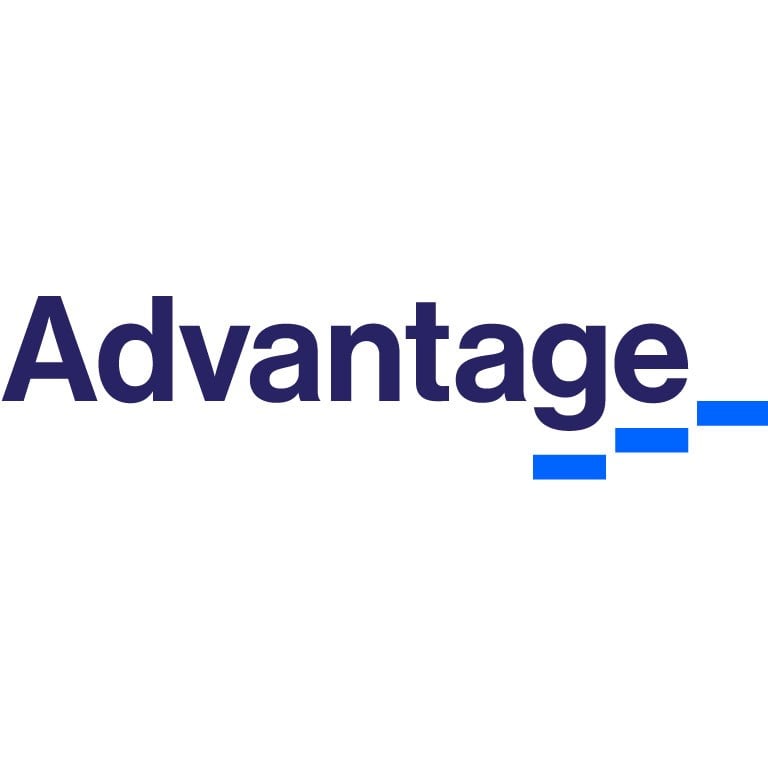
About Advantage Group International
Advantage has been the leading adviser in business-to-business engagement globally since 1988. We help supplier and retail businesses be better together by designing and delivering engagement solutions that measure and strengthen performance. For more information, visit www.advantagegroup.com.